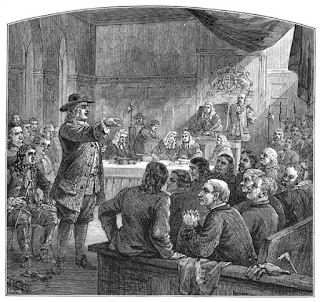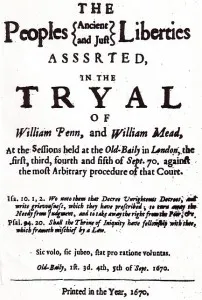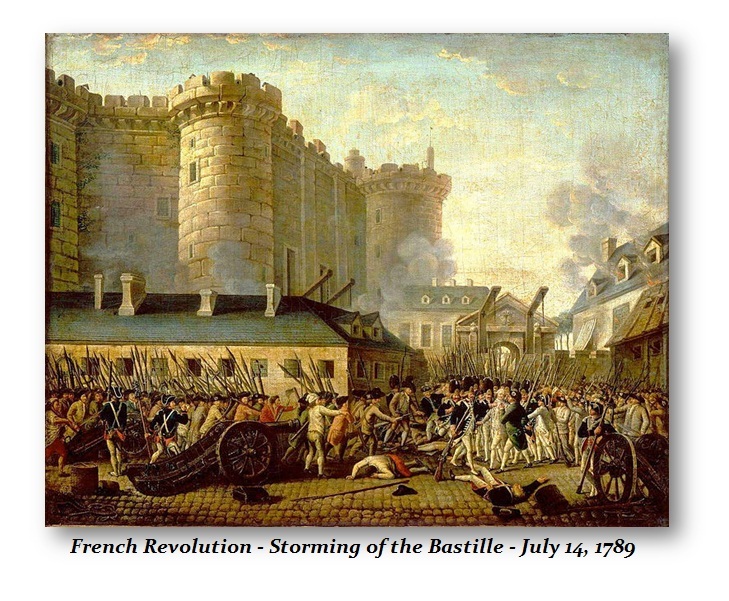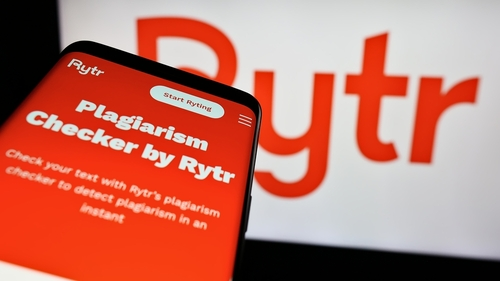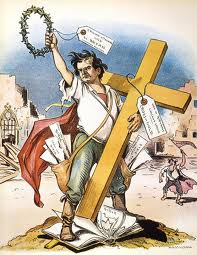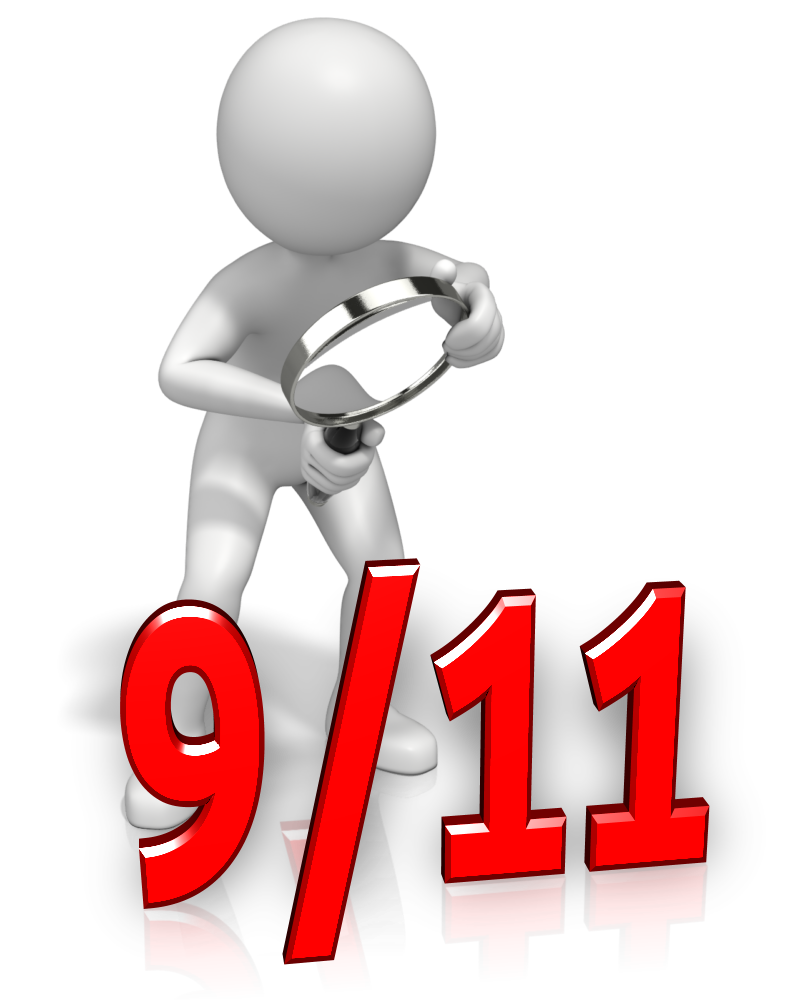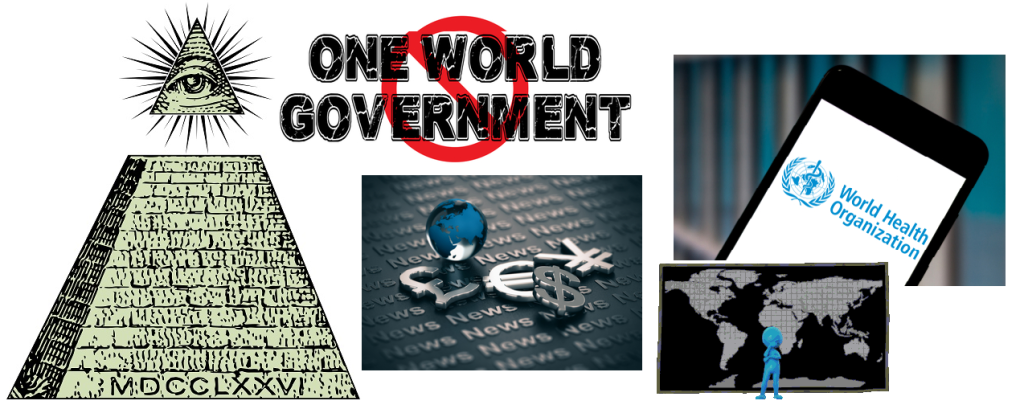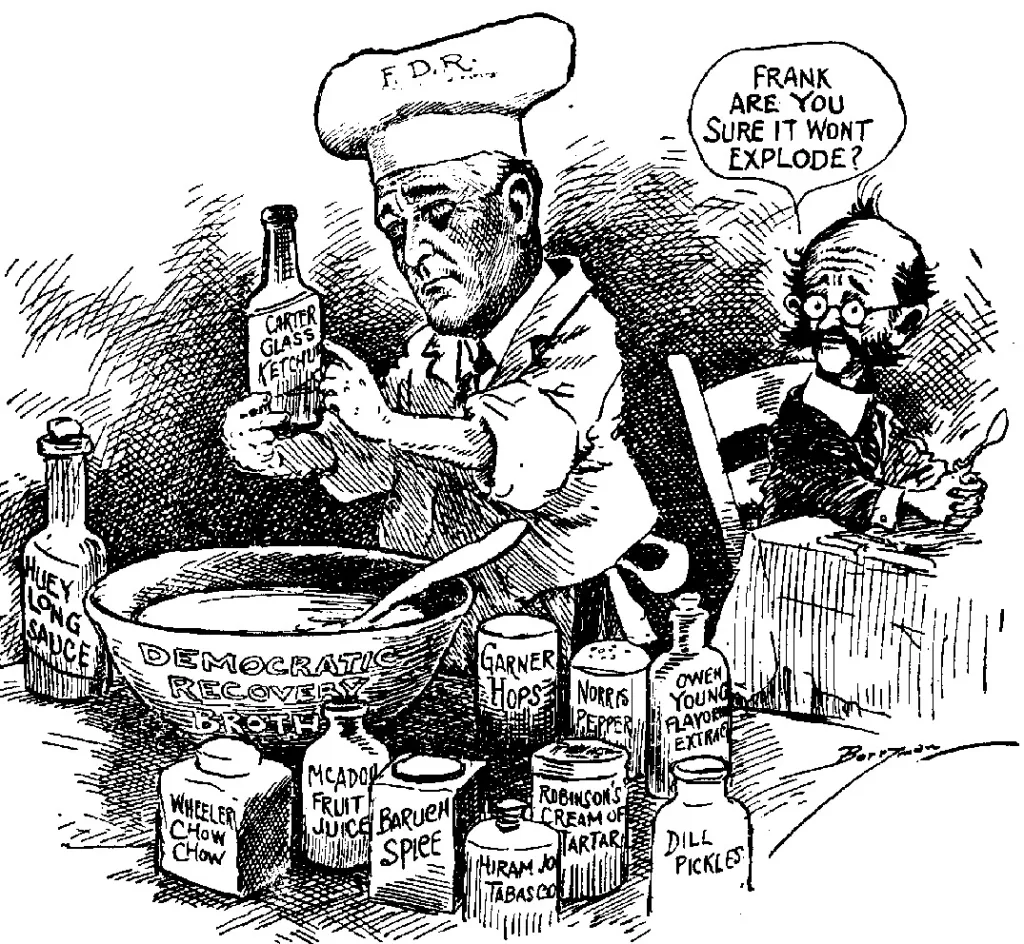The most famous trial where a jury stood up refusing to find the defendant guilty in the face of a corrupt government, was that of William Penn, the founder of Pennsylvania. Penn was the leader of the Quakers in London. The sect was not recognized by the government and was forbidden to meet in any building for the purpose of worship. In 1670, William Penn held a worship service on a quiet street, which was attended by a peaceful group of fellow Quakers. Penn and another Quaker, William Mead, were arrested on a charge of disturbing the king’s peace and summoned to stand trial.
As the two men entered the courtroom, a bailiff ordered them to place their hats, which they had removed, back on their heads. When they complied, they were called forward and held in contempt of court for being in the courtroom with their hats on. Penn discovered contempt of court is a personal prerogative of the judge and is an infliction of punishment by a judge who becomes the legislator, jury, and the sentencing judge.
Penn demanded to know upon what crime he was being charged for preaching. The judge refused to supply any information as to his crime and instead referred vaguely to the common law. When Penn protested that he was entitled to a specific indictment (NOTICE), he was removed from the presence of the judge and jury, and confined in an enclosed corner of the room known as the bale-dock.
Penn could neither confront the witnesses who accused him of preaching to the Quakers nor ask them questions about their charges against him. Several witnesses testified that Penn had preached to a gathering, which included Mead, but one showed some hesitancy as to whether Mead had been present. The judge turned to Mead and questioned him directly. In effect, the judge became the prosecutor, as he asked Mead if he was guilty. Mead invoked the common-law privilege against self-incrimination, which provoked hostile comments from the judge. The court then sent Mead to join Penn in the bale-dock out of the sight of the jury and witnesses.
Finally, after the testimony the court concluded, the judge instructed the jury to find the defendants guilty as charged, dictating what verdict he expected. Penn tried to protest, but was silenced and again sent out of the courtroom. The jury, for its part, proved sympathetic to the two defendants and refused the judge’s command to find the defendants guilty.
The judge at this point became enraged and sent the jury back to reconsider their verdict. When they returned with the same verdict, the court criticized the jury’s leader, Bushnell, and demanded “a verdict that the court will accept, and you shall be locked up without meat, drink, fire, and tobacco…We will have a verdict by the help of God or you will starve for it.”
Thereafter, the jury was sent back three more times, but returned with the same verdict. Finally, the jury refused to reconsider. The judge then fined each member of the jury forty marks and ordered them imprisoned until the fine was paid. Penn and Mead went to prison anyway, held in contempt for obeying the bailiff’s order that they put on their hats.
Later, the members of the jury won a writ of habeas corpus and were released from prison. Penn and Mead left England after their release from prison, having a taste of justice, and sailed to America. (Earl Warren, “A Republic, If You Can Keep It”, p. 113-115)
This is a famous case for it illustrated that at some point, the faith of the people in government collapses so much that finally juries stand up in protest against corrupt and biased prosecutions. In France, it became the Revolution with Bastille Day freeing the prisoners from jail.
Because American juries were rising up against the false prosecution of the king, the Sixth Amendment states that you are entitled to an impartial jury and a trial in the “district wherein the crime shall have been committed.” Why? Because the king would put you on a ship in chains and put you on trial in England where the jury would rule against an American. That had the effect of denying you the right to even call upon any witness in your favor.
In all criminal prosecutions, the accused shall enjoy the right to a speedy and public trial, by an impartial jury of the State and district wherein the crime shall have been committed, which district shall have been previously ascertained by law, and to be informed of the nature and cause of the accusation; to be confronted with the witnesses against him; to have compulsory process for obtaining witnesses in his favor, and to have the Assistance of Counsel for his defense. – The Sixth Amendment of the U.S. Constitution
Juries do not take their constitutional role seriously and judges today disagree that they have the right to reject whatever he tells them the law should mean. In 1895 in the case of Sparf v. United States written by Justice John Marshall Harlan, the United States Supreme Court held 5 to 4 that a trial judge has no responsibility to inform the jury of the right to nullify laws. This decision, often cited, has led to a common practice by United States judges to penalize anyone who attempts to present a nullification argument to jurors and to declare a mistrial if such argument has been presented to them. In some states, jurors are likely to be struck from the panel during voir dire if they will not agree to accept as correct the rulings and instructions of the law as provided by the judge. This illustrates that the very same powers of the judge in the case against William Penn are alive and well.
In recent rulings, the courts have continued to prohibit informing juries about jury their CONSTITUTIONAL right to nullification. In a 1969, Fourth Circuit decision, U.S. v. Moylan (417 F.2d 1002), the Court affirmed the concept of jury nullification, but upheld the power of a court to refuse to permit an instruction to the jury to this effect. The Moylan court wrote:
“If the jury feels the law is unjust, we recognize the undisputed power of the jury to acquit.” — 4th Circuit Court of Appeals United States v. Moylan 1969
So how can the government refuse to explain the right of the jury? This is what it always comes down to: Justice = Just US.
In 1988, the Sixth Circuit upheld a jury instruction: “There is no such thing as valid jury nullification.” In ‘United States v. Thomas (1997), the Second Circuit ruled that jurors can be removed if there is evidence that they intend to nullify the law. History repeats because the passions of man never change. Judges enjoy the power and do not want juries to refuse their commands. This is totally UNCONSTITUTIONAL and demonstrates how and why the cycle of how nations collapse always returns.

